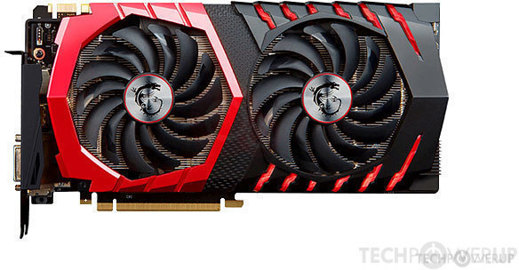Nicholas Steel
New Member
- Joined
- Jan 2, 2022
- Messages
- 13 (0.01/day)
with VRAM clocks at default the following is observed:
1901MHz in GPU-Z Sensor tab (incorrect value)
2002MHz in GPU-Z Graphics Card tab (correct value)
1901MHz in AIDA 64 Overclocking section
3802MHz in MSI Afterburner
With VRAM clocks increased by 202MHz in MSI Afterburner the following is observed:
1952MHz in GPU-Z Sensor tab
2103MHz in GPU-Z Graphics Card tab*
1952MHz in AIDA 64 Overclocking section
4006MHz in MSI Afterburner
*I get the feeling MSI Afterburner is applying a theoretical 202MHz which is why only +101MHz is observed in GPU-Z's Graphics Card tab. Another words this part of GPU-Z is showing both the correct value and that increases to clock speed via MSI Afterburner are visually doubled from the actual increase being applied (MSI Afterburner seems to be showing the theoretical doubling of speed attributed to DDR).
GPU-Z 2.41.0
Nvidia Driver 472.12
Windows 10 21H2

 www.techpowerup.com
www.techpowerup.com
1901MHz in GPU-Z Sensor tab (incorrect value)
2002MHz in GPU-Z Graphics Card tab (correct value)
1901MHz in AIDA 64 Overclocking section
3802MHz in MSI Afterburner
With VRAM clocks increased by 202MHz in MSI Afterburner the following is observed:
1952MHz in GPU-Z Sensor tab
2103MHz in GPU-Z Graphics Card tab*
1952MHz in AIDA 64 Overclocking section
4006MHz in MSI Afterburner
*I get the feeling MSI Afterburner is applying a theoretical 202MHz which is why only +101MHz is observed in GPU-Z's Graphics Card tab. Another words this part of GPU-Z is showing both the correct value and that increases to clock speed via MSI Afterburner are visually doubled from the actual increase being applied (MSI Afterburner seems to be showing the theoretical doubling of speed attributed to DDR).
GPU-Z 2.41.0
Nvidia Driver 472.12
Windows 10 21H2

MSI GTX 1070 Ti GAMING Specs
NVIDIA GP104, 1683 MHz, 2432 Cores, 152 TMUs, 64 ROPs, 8192 MB GDDR5, 2002 MHz, 256 bit





